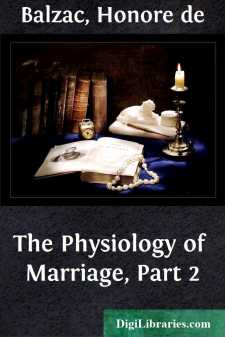Categories
- Antiques & Collectibles 13
- Architecture 36
- Art 48
- Bibles 22
- Biography & Autobiography 813
- Body, Mind & Spirit 142
- Business & Economics 28
- Children's Books 17
- Children's Fiction 14
- Computers 4
- Cooking 94
- Crafts & Hobbies 4
- Drama 346
- Education 46
- Family & Relationships 57
- Fiction 11829
- Games 19
- Gardening 17
- Health & Fitness 34
- History 1377
- House & Home 1
- Humor 147
- Juvenile Fiction 1873
- Juvenile Nonfiction 202
- Language Arts & Disciplines 88
- Law 16
- Literary Collections 686
- Literary Criticism 179
- Mathematics 13
- Medical 41
- Music 40
- Nature 179
- Non-Classifiable 1768
- Performing Arts 7
- Periodicals 1453
- Philosophy 64
- Photography 2
- Poetry 896
- Political Science 203
- Psychology 42
- Reference 154
- Religion 513
- Science 126
- Self-Help 84
- Social Science 81
- Sports & Recreation 34
- Study Aids 3
- Technology & Engineering 59
- Transportation 23
- Travel 463
- True Crime 29
A Street of Paris and Its Inhabitant
by: Honore de Balzac
Description:
Excerpt
PREFACE
This little Parisian silhouette in prose was written by Balzac to be the first chapter of a new series of the "Comedie Humaine" that he was preparing while the first was finishing. Balzac was never tired. He said that the men who were tired were those who rested and tried to work afterwards.
"A Street of Paris and its Inhabitant" was in its author's mind when Hetzel, engaged in collecting a copy for the work entitled "Le Diable a Paris" that all book lovers admire, asked Balzac for an unpublished manuscript.
Balzac gave him this, after retouching it, in order that it should have the air of a finished story. Why Hetzel did not use it in "Le Diable a Paris," no one knows. He went into exile, in Brussels, at the military revolution that made Napoleon III Emperor and, needing money, sold "A Street of Paris and its Inhabitant" with other manuscripts to Le Siecle.
Balzac's work was printed entire in three pages of the journal Le Siecle, in Paris, July 28, 1845. M. le Vicomte Spoelberch de Lovenjoul owns Balzac's autograph manuscript of it. These details are given by him and might be reproduced here with his signature. But the publishers wish not to be deprived of the pleasure of paying homage to the Vicomte Spoelberch de Lovenjoul.
He has made in the biography of Balzac, in editions of his books, in the pious collection of his unpublished writings, the ideal literary man's monument.
H. P. du B.
I
Paris has curved streets, streets that are serpentine. It counts, perhaps, only the Rue Boudreau in the Chaussee d'Antin and the Rue Duguay-Trouin near the Luxembourg as streets shaped exactly like a T-square. The Rue Duguay-Trouin extends one of its two arms to the Rue d'Assas and the other to the Rue de Fleurus.
In 1827 the Rue Duguay-Trouin was paved neither on one side nor on the other; it was lighted neither at its angle nor at its ends. Perhaps it is not, even to-day, paved or lighted. In truth, this street has so few houses, or the houses are so modest, that one does not see them; the city's forgetfulness of them is explained, then, by their little importance.
Lack of solidity in the soil is a reason for that state of things. The street is situated on a point of the Catacombs so dangerous that a portion of the road disappeared recently, leaving an excavation to the astonished eyes of the scarce inhabitants of that corner of Paris.
A great clamor arose in the newspapers about it. The government corked up the "Fontis"—such is the name of that territorial bankruptcy—and the gardens that border the street, destitute of passers-by, were reassured the more easily because the tax list did not weigh on them.
The arm of the street that extends to the Rue de Fleurus is entirely occupied, at the left, by a wall on the top of which shine broken bottles and iron lances fixed in the plaster—a sort of warning to hands of lovers and of thieves.
In this wall is a door, the famous little garden door, so necessary to dramas and to novels, which is beginning to disappear from Paris....












